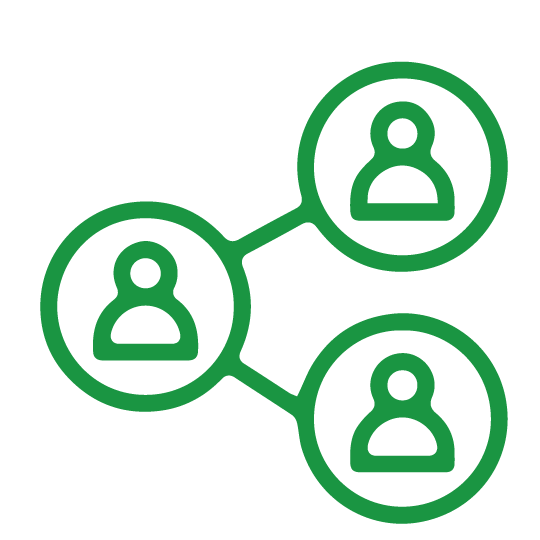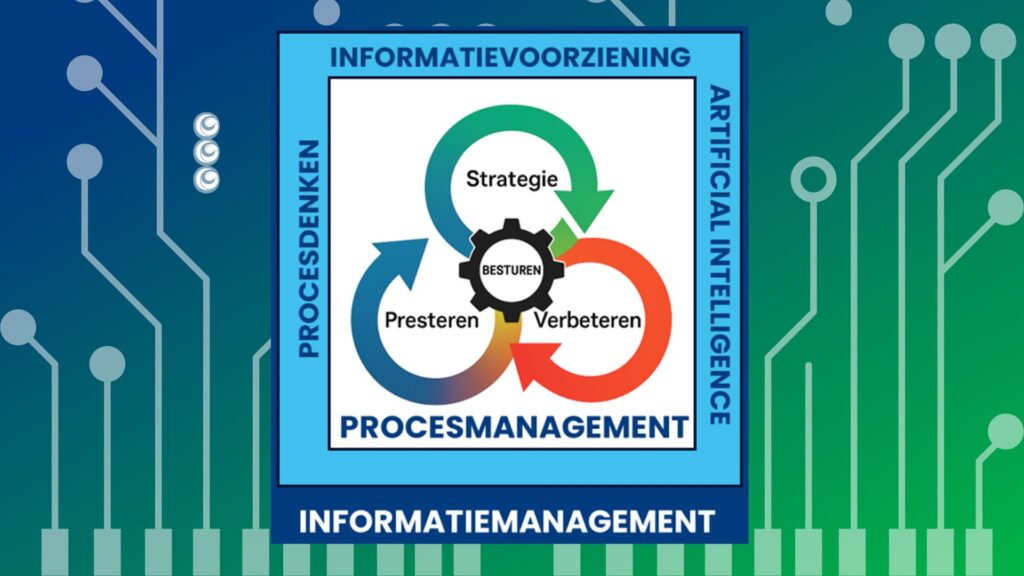From data-driven to truly intelligent
In recent years, many organisations have made great strides in process and data-driven working. Processes are better standardised, dashboards provide real-time insight and decision-making is based more on facts than feelings. Still, the feeling lingers that there is more to be gained. After all, the process domains of strategy, control, execution and optimisation still too often work as separate ecosystems.
With the rise of Artificial Intelligence (AI) in the information provision of organisations, we see that these four process domains are becoming increasingly intertwined. Where previously there were ecosystems that struggled to find each other, a single coherent whole is now emerging in which planning, steering, execution and improvement continuously reinforce each other. Thanks to AI, information not only becomes smarter, but also increasingly actionable and adaptive. This gives organisations the ability to move from purely data-driven to intelligent learning.
An already widely seen example is financial administration, where AI agents are now performing work processes independently. For example, an agent recognises incoming invoices, checks the data, links them to purchase orders and automatically books them into systems such as Exact or AFAS. People remain responsible for exceptions and checks, but the executive process is largely autonomous. This makes information provision not only smarter, but also actionable.
This is the core of this vision: the natural integration of the process domains into a single ecosystem where humans, process and AI work together hybridly - the Nirvana of process maturity.
The role of AI in this development
AI acts as a catalyst in this integration. It provides automatic generation, interpretation and exchange of information - at a scale and speed that would be unthinkable without AI.
In organisations where information provision and processes are well established, AI provides:
- Real-time insights that directly connect strategy and execution;
- Predictive analytics that identify anomalies and opportunities early;
- Automatic actions that make processes self-correcting.
A practical example is a healthcare institution using AI to optimise staff scheduling and patient care. The system analyses historical data on care demand, staffing levels and competences, and combines it with current information such as sickness absence and scheduling requirements. Based on this, AI makes real-time proposals for the optimal deployment of staff so that the right healthcare professional is with the right patient at the right time. This allows early detection of bottlenecks in the planning and immediate adjustment by managers. This creates a self-learning cycle in which strategy, planning and execution are continuously aligned and improved.
AI thus lifts intelligence from supportive and reactive to guiding and learning. Humans remain responsible for direction, values and ethics, but intelligence shifts ever further towards operations.
Process management and information management: the foundation
The connection between processes and the proper deployment of AI does not arise naturally.
- Process management brings structure, ownership and continuous improvement.
- Information management takes care of data, systems and governance.
Together, they provide the alignment and flow between processes. Underlying it, process thinking is the connecting factor that gives these two disciplines their strength. It makes visible how value flows through the organisation, how roles touch and where information gets real meaning. It fills in the gaps between the activities within organisations so that they are better connected. Without that common process thinking, process management and information management remain separate areas of expertise; with that thinking, together they form the foundation on which AI and information provision can flourish.
Without process management, no clarity on what needs to be connected. Without good information management, no reliable information to do so.
When those two disciplines work well together, it creates an information system that not only supports what happens, but directs what can happen.
From separate processes to a single ecosystem
This development allows organisations to grow from four sub-systems to one learning ecosystem:
- Strategic processes get direct feedback from operations.
- Steering processes translate insights in real time into tactical choices.
- Executive processes are supported by predictive information.
- Optimising processes continuously learn from data and behaviour.
At the ultimate stage - the Nirvana of this growth model - these processes merge seamlessly. Strategy, execution and optimisation then form one intelligent system that adapts, learns and improves itself. Humans will always remain at the helm in a hybrid collaborative form with AI.
Most organisations are still halfway through that journey, but the movement is undeniable: more and more processes, information and decision-making are growing together in a single intelligent ecosystem.
Executive power through intelligent cohesion
Real execution power arises when strategy, steering, execution and optimisation reinforce each other cyclically.
For example, a construction company uses AI to track progress, material consumption and weather forecast real-time combine with strategic maintenance planning. When projects slow down or material consumption deviates, the system automatically adjusts maintenance strategy and planning. Resources are reallocated or subcontractors adjusted, literally bringing strategy and execution together. This creates a continuous learning cycle in which each project experience reinforces the next.
AI accelerates that consistency, but the preconditions are still created by good process and information management.
Organisations that manage to strike this balance grow beyond data-driven working. They become intelligently adaptive:
- more alignment, because everyone is steering on the same information;
- more agility, thanks to real-time signalling and adjustment;
- more learning, as processes continuously process feedback.
The result: an organisation that not only conceives strategy, but also delivers it sustainably.
In the following, I elaborate on the four maturity levels of this growth model: from fragmented processes to a fully integrated ecosystem where people, process and AI reinforce each other. This will be followed by another article on how to practically grow process and information maturity as an organisation. So, stay tuned!






















